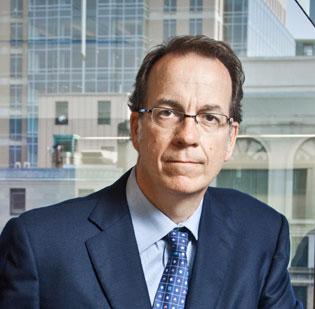Amid whipsawing markets, investors are rediscovering risk management. Can they overcome their emotions and stay there when markets turn? Chairman of Diffractive Managers Group and former CEO of Natixis, John Hailer, says yes, with the right portfolio.
Value for Money
It’s an old adage that investors will always pay for performance. But with advisory portfolios looking more and more like institutional ones and risk management an increasingly common input in modern portfolio construction, is the perception of value for money among investors shifting as well?
We spoke with the former CEO of Natixis, John Hailer, now Chairman of Diffractive Managers Group, a fast-growing multi-boutique asset manager whose ten affiliates offer a range of core portfolio and non-traditional, specialized offerings.
Investor Emotions
“For a lot of investors, their portfolios become an amalgamation of their own emotional behaviors,” said Hailer. “The result is that it hardwires them to be poor investors, investing the most when they’re the most comfortable and retreating from their plan when they hit a bump in the road.”
This usually means investors reacting to whatever is most recent in their minds, what the industry calls ‘recency bias,’ whether that is what is happening now or what was most meaningful to them in the recent past. It could be today’s headlines or the last bull or bear market. Either way, it leads to poor decision-making, Hailer says.
The Bull Market
Take recent years as an example. Prior to 2021, late in a bull market, high-risk assets were dominating headlines. Then when 2022 ushered in a bear market, with many still pursuing returns through high-risk portfolios highly correlated to the market, the traditional 60/40 portfolio mix of fixed income and equities had its second-worst year since the inception of the Bloomberg US Aggregate Bond Index, an 18% loss on a nominal basis.
“Today’s recency bias is now looking back at 2022 and that has meant a renewed focus on managing risk in portfolios,” said portfolio expert John Hailer. “That’s good, but when the market turns, can investors avoid pivoting back with it and again chasing returns? That’s where good portfolio construction comes in.”
Building Durable Portfolios
“We know that for most investors the biggest risk is not staying invested,” said Hailer. “And the only way to avoid that is to build durable portfolios that keep investors aligned with their outcomes.”
That often means building investor portfolios that look more and more like those of large institutional investors like large pension funds, insurers, and even sovereign wealth funds, whose broadly diversified portfolios and long-term outlooks generally eschew the attempts at market timing too often seen among the investing public.
“As more investors are recognizing this, we’re seeing a lot more interest from the advisor community in new types of vehicles that can access asset classes more traditionally available to institutions in order to help advisors build the types of portfolios that help shield investors from these behaviors and keep them invested,” said Hailer.
Building a Plan
The key for investors is to build a plan and strategy that is risk aware, diversified, and can allow investors to stay invested when the market bends or even breaks. To do this, investors need access to what institutions with long-term horizons and liabilities have done, which is to look for a combination of liquid and non-liquid options. The typical institution has more than 20 percent of its assets in private non-liquid investments. But new vehicles and new fund structures are providing more of the liquidity that individual investors need to be able to access these complex structures.
“It’s always been a secular theme that individual investors need to behave more like institutions,” said John Hailer.



